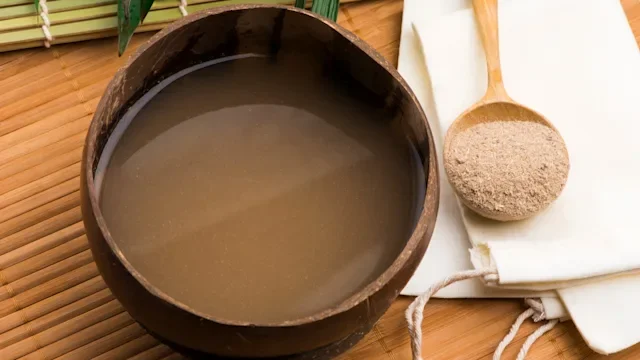Key takeaways:
Getting too high from cannabis (sometimes called "greening out") can be uncomfortable, but it’s rarely dangerous. Time is the only real way to get unhigh. But distracting yourself with music, activities or a nap can also help.
How long a cannabis high lasts depends on how you consume it as well as other personal factors. If you inhale cannabis, the effects may wear off after an hour or so. But the effects from cannabis edibles can last 8 hours or longer.
The best way to avoid being too high is start with a low cannabis dosage and wait for each dose to take effect before consuming any more.
More people are consuming cannabis as U.S. states continue to legalize it. Cannabis may seem tame compared to substances like meth, crack, or heroin. But the high from cannabis can easily turn into an unpleasant experience if you overdo it, often referred to as “greening out.”
If this happens to you, you may be wondering how to get unhigh quickly. Unfortunately, there’s not a quick fix when it comes to reversing the effects of cannabis. But in most cases, there are steps you can take to make the experience less stressful. Let’s take a look at eight ways to avoid an unpleasant cannabis experience and sober up safely.
1. Watch your dose and potency
You can’t reverse a cannabis high. But you can avoid greening out by keeping an eye on your dosage and the potency of the products you’re consuming.
Search and compare options
High potency cannabis products have become more widely available in recent years. So even if you’ve consumed cannabis in the past, you may easily overdo it if you don’t pay close attention to the potency of the product you’re using.
Stick to cannabis products with less than 10 mg of THC per serving, or a THC potency of less than 20%. You can also look for products with more CBD than THC, as they’re less likely to cause an unpleasant high.
State-regulated dispensaries are required to have this information on the label to help you avoid accidentally consuming more THC than intended. This is just one of many reasons why you should avoid purchasing products outside of a legal, state-regulated system.
It’s also a good idea to start with a small amount of cannabis and wait for the effects to kick in before consuming more. This is especially true for edibles, since they can take an hour or longer to start working and the effects last longer. Giving yourself time to feel the effects before consuming another dose can help you avoid getting higher than you intended.
2. Give it time
The best approach to an unwanted high is to wait it out. Your symptoms should fade on their own as the effects of cannabis wear off. For an inhaled dose, this could take an hour or so. But for an edible, it could take 8 hours or longer.
It’s fine to engage in other activities while you’re waiting. Just avoid driving, making important decisions, or other things that require attention or coordination. This helps reduce the risk of accidental harm.
Cannabis and “the munchies:” Here’s why weed makes you hungry and how you can avoid this side effect.
Can you overdose on weed? Taking too much cannabis isn’t likely to be fatal, but it has serious risks and side effects to be aware of.
Why does cannabis affect people differently? Learn why your cannabis experience may be very different from someone else’s, and how to avoid an unpleasant experience.
3. Stay calm
Anxiety and paranoia are common side effects of a cannabis overdose. But in most cases, being too high is unpleasant and passing. It rarely leads to serious side effects.
Staying calm and using relaxation techniques can help you manage cannabis-related anxiety until it passes. Try listening to a guided meditation or even taking a nap. If needed, call a trusted friend or family member to talk you through any anxiety you’re struggling with.
4. Find a distraction
Finding a distraction can help pass the time and avoid anxiety while you’re waiting for a cannabis high to wear off. Options include:
Listening to music
Chatting with a friend
Watching a favorite movie or TV show
Taking a walk
Coloring, painting, or other arts and crafts
Take a shower or bath
Read more like this
Explore these related articles, suggested for readers like you.
5. Drink water, but avoid coffee and beer
Staying hydrated can help you manage some cannabis side effects, such as dry mouth and headache. But it’s best to avoid coffee and alcohol if you’re feeling too high.
There is evidence to suggest alcohol actually increases the amount of THC in your bloodstream. This could make you feel even more high, so it’s best to avoid this combination.
Caffeine’s stimulant effects could worsen feelings of anxiety. So if you’re too high, it’s also a good idea to skip coffee or other caffeinated drinks and stick to water or juice instead.
6. Avoid home remedies
There are many home remedies that claim to help you stop feeling high from cannabis. But there’s little evidence that they actually work. This includes things such as:
Smelling or chewing black peppercorn
Drinking lemon water
Eating pine nuts
Taking CBD
These home remedies aren’t likely to cause any harm. But they aren’t likely to have much benefit, either. So it’s best to avoid them and stick to the practices we’ve discussed until your cannabis high goes away on its own.
Good to know: You might be tempted to counteract a cannabis high with other substances — but this should be avoided. Things like cocaine or prescription stimulants will only increase your level of intoxication. They can also increase the chance of disordered thinking, risky behaviors, and even overdose. So it’s best to avoid mixing cannabis with other substances.
7. Seek professional care
It isn’t common, but if you’re experiencing symptoms that seem severe or life-threatening after consuming cannabis, it’s best to seek emergency medical care.
Severe symptoms may include:
Chest pain
Trouble breathing
Hallucinations (hearing or seeing things that aren’t there)
Seizures
Severe vomiting
Keep in mind that a cannabis overdose is rarely fatal. But it’s always better to be safe than sorry and seek medical care if your symptoms feel severe. If possible, bring the cannabis product or packaging with you to help assist the medical team with your care.
It’s also a good idea to seek professional help if you’re getting too high on a regular basis, or feel unable to stop or reduce your cannabis use on your own. These could be signs of cannabis use disorder.
What are the typical symptoms of being high?
The most common signs and symptoms of a cannabis high include:
Feeling happy
Relaxed and calm state of mind
Increased hunger (known as “the munchies”)
Changed perception of time
Enhanced perceptions of sounds, colors, or touch
Keep in mind that these effects are different for everyone. And what feels pleasant for some can feel scary or unpleasant to others. And it’s easy to cross the line from a pleasant euphoria into feeling too high, especially if you’re new to cannabis or using high-potency products.
How will you know if you’re too high or ‘greening out’?
If you consume more cannabis than intended, it’s possible to experience more distressing side effects. These include:
Anxiety, panic, or paranoia
Impaired judgment and coordination
Fear and distrust
Hallucinations
Combining cannabis with other substances can make these side effects more likely. So can consuming high-potency cannabis products. As mentioned, you can help avoid getting too high by starting with a low dose of cannabis and waiting for each dose to take effect before consuming more.
Frequently asked questions
There aren’t any foods that will help you sober up if you get too high after consuming cannabis. But it’s fine to seek out healthy snacks, such as fruits and vegetables, or a light meal if you’re feeling hungry. Some evidence suggests that high-fat foods may increase the absorption of cannabis, which could worsen your high. So it’s best to avoid fatty foods if you’re already feeling too high.
How long a cannabis high lasts depends on many different factors. Cannabis affects everyone differently, so your experience may be different from someone else’s. It also depends how you consumed cannabis. If you inhaled it, it should wear off within an hour or so. But edibles can take 8 hours or longer.
Yes, it’s possible for a cannabis high to last overnight. This is especially likely with cannabis edibles, since they last longer in the body than other dosage forms. If you’re still feeling high after more than 12 to 24 hours without consuming additional cannabis, it’s a good idea to seek medical care. There could be another cause of your symptoms that needs further care.
There aren’t any foods that will help you sober up if you get too high after consuming cannabis. But it’s fine to seek out healthy snacks, such as fruits and vegetables, or a light meal if you’re feeling hungry. Some evidence suggests that high-fat foods may increase the absorption of cannabis, which could worsen your high. So it’s best to avoid fatty foods if you’re already feeling too high.
How long a cannabis high lasts depends on many different factors. Cannabis affects everyone differently, so your experience may be different from someone else’s. It also depends how you consumed cannabis. If you inhaled it, it should wear off within an hour or so. But edibles can take 8 hours or longer.
Yes, it’s possible for a cannabis high to last overnight. This is especially likely with cannabis edibles, since they last longer in the body than other dosage forms. If you’re still feeling high after more than 12 to 24 hours without consuming additional cannabis, it’s a good idea to seek medical care. There could be another cause of your symptoms that needs further care.
The bottom line
Getting too high from cannabis — often called “greening out” — can be uncomfortable, but it usually isn't dangerous. Time is the only real way to get unhigh. But you can take simple steps to feel more at ease while you wait it out. Stay calm, drink water, and find ways to safely distract yourself until the high passes. Avoid home remedies and other substances that can make your symptoms worse.
You can prevent an unwanted cannabis high by choosing low-potency cannabis, starting with small amounts, and waiting for each dose to take effect before consuming more.

Why trust our experts?


References
American Association for Clinical Chemistry. (2015). Any dose of alcohol combined with cannabis significantly increases levels of THC in blood. ScienceDaily.
Drug Enforcement Administration. (2020). Stimulants.
Khairinisa, M. A., et al. (2023). Cannabis and other substance misuse: Implications and regulations. Toxics.
MedlinePlus. (2024). Marijuana.
National Center for Complementary and Integrative Health. (2021). Relaxation techniques: What you need to know. National Institutes of Health.
National Institute on Drug Abuse. (2024). Cannabis (marijuana). National Institutes of Health.
Zgair, A., et al. (2016). Dietary fats and pharmaceutical lipid excipients increase systemic exposure to orally administered cannabis and cannabis-based medicines. American Journal of Translational Research.

















